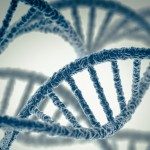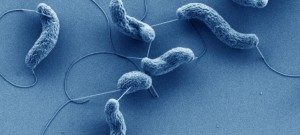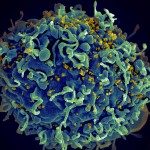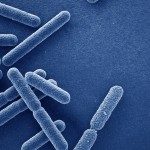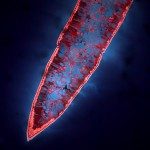Phenotypic adaptation to antibiotics: t/rRNA modifications
Free-living bacteria commonly cope with and adapt to changing environments. We have shown that various families of antibiotics are capable, at concentrations as low as 1% of the MIC, to activate stress responses in pathogenic Gram-negative bacteria from different genera, and that such responses can lead to bacterial adaptation and emergence of resistance to antibiotics. One such response is the SOS DNA damage response.
Our observation that antibiotics targeting translation (aminoglycosides, chloramphenicol, tetracycline) can induce SOS in various bacteria was intriguing. We thus started to study the mechanisms of these inductions. We demonstrated that exposure to sub-MIC of aminoglycosides was leading to oxidative DNA damage, sufficiently to trigger SOS in V. cholerae. Furthermore, we showed that the RpoS dependent general stress response plays a role in the protection against the stress caused by the presence of antibiotics.
We found that protection against this oxidative stress is more efficient in E. coli than in V. cholerae, due to a more efficient RpoS response. Importantly, we found that the unresponsiveness of E. coli to non-genotoxic antibiotics regarding SOS induction, was very specific to this species. These studies have thus revealed that V. cholerae could be a good model for proteobacteria for understanding the effects of low doses of antibiotics commonly found in the environment, and the mechanisms by which these molecules trigger antibiotic resistance.
To understand the mechanisms of the SOS induction by aminoglycosides in V. cholerae, we adopted genetic and high throughput approaches. These led to the identification of genes involved in transcription restart at R-loops, in the response to subMIC antibiotics.
The results also highlight the need for efficient translation transcription coupling upon exposure to sub-MIC aminoglycosides. Thus, sublethal aminoglycoside stress is sufficient to interfere with the DNA repair and replication machineries, and the RNA metabolism, through several processes: first through increased reactive oxygen species formation, which can directly damage DNA, but also through impaired translation (and transcription) which can lead to R-loop formation and DNA breaks, and general proteotoxic stress.
Sub-MIC aminoglycosides may not affect all ribosomes equally, leading to heterogeneity of responses within a clonal population. Single cell approaches would be complementary and suitable in future research to compare behaviors and responses at both sub-population/whole population levels.
The study of the response of bacteria to sub-MIC antibiotics can reveal new tolerance/resistance mechanisms to lethal doses. Studying the effects of non-lethal aminoglycoside concentrations, we uncovered a new role for RaiA in mediating ribosome protection under its 70S monomeric (active) form, which seems to enhance the appearance of persisters to aminoglycosides, thus at high antibiotic doses.
We have recently adopted parallel large-scale approaches to evaluate the effects of low doses of antibiotics from different families on gene expression (transcriptomic study through RNA-Seq) and the factors involved in the response to this stress (transposon insertion sequencing, (TN-Seq), allowing the search for genes that become essential or important for survival in the presence of low doses of antibiotics. Comparisons also allow the identification of common and specific responses to antibiotics with different modes of actions and targeting different processes.
We study the effects of sub-MIC antibiotic doses from 2% to 50% of the minimal inhibitory concentration (MIC) required to completely prevent bacterial growth. We also use data obtained from the study of sub-MICs to evaluate the involvement of identified pathways in tolerance to higher/lethal doses.
Until now, we have studied mostly the effects of sub-MICs of the aminoglycoside family of antibiotics, and occasionally fluoroquinolones for studies involving genotoxic stress. Aminoglycosides target the ribosome, leading to mistranslation and eventually cell death, whereas fluoroquinolones cause DNA damage and chromosome breakage. Both classes are bactericidal.
The preliminary data obtained by the above-mentioned approaches and projects started earlier allows us now to specifically focus on the role of epigenetics and RNA modifications in the response to antibiotic stress.
The goal of our project is to study the role of RNA modifications and variations in translation fidelity and efficiency in mediating the response to sub-MIC antibiotic stress. We to explore the link between sub-lethal antibiotic stress, t/rRNA modifications and modulation of translation fidelity/codon decoding, and contribution to antibiotic resistance.
We are especially interested in the role of queuosine modification in tRNA (phenotypically uncharacterized in prokaryotes) in the response to sub-lethal antibiotic stress, as well as dihydrouridine and pseudouridine.

